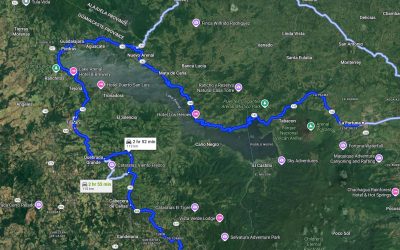How to Flip Properties in Costa Rica: One of my favorite ways to invest in real estate is flipping homes — nothing more than buying a property at a certain price, adding value to it and selling it again with an attractive profit margin. This definition is simple in nature, but the process requires time and expertise, and more so, attention to details. This is a brief walk-through I share with my clients about flipping homes that will make the path to success easier.
Look for properties
that are cosmetic disasters.
Stage 1. Research and analyze the current market situation
This is the most important stage and it’s crucial to get it right from the start. Flipping homes is not a race so I advise taking your time and doing your homework. A good home flipper is both savvy and patient. We want to buy properties located in thriving communities with good growth potential in terms of population and infrastructure. Construction of new schools, banks, clinics, health centers and other services are good signs at this stage.
Analyze the current selling price of houses with similar characteristics from the ones you have picked as possible flipping opportunities. Understand how market pricing measures against current economic scenarios. For example, in Costa Rica, due to the current colon currency devaluation and the rise of interest rates, the rate of default mortgage payments has increased from 2 percent to 2.6 percent in only nine months. This means more people are not paying their obligations to banks; hence more opportunities on good deals will come in the mid future.

Stage 2. Picking the right property to flip
Build your own financial flipping formula and stick to it. Don’t let your emotions get in the way of picking a good asset to flip. Look at this formula: (purchase price + upgrade expenses) * (1+ profit margin) = selling price
Stage 3. Putting the team together and cashing out
Once you’ve finished writing up your upgrade budget, you will have to put together a team of professionals to carry out the job, each of them with specific responsibilities. The architect and interior designer will be in charge of making the house appealing to the client niche you have previously selected. The engineers will help get the remodeling plans approved and lead out the construction. Finally, the real estate advisor will market the property accordingly and lead the negotiations and closing procedures.
These three easy-to-follow steps will make your flipping journey enjoyable while cashing out a good profit at the end. Happy flipping!
Applying for Costa Rica Residency
HOA Meetings
Tax Time, Corporations and Property Owners
Corporate Tax Update
Power of Attorney in Costa Rica
Annual Tax Over Costa Rica Corporations
Due Diligence, Purchasing a Vehicle in Costa Rica
Costa Rica Income & Sales Tax
Estate Planning
Purchasing a Condominium
Buying a Business






